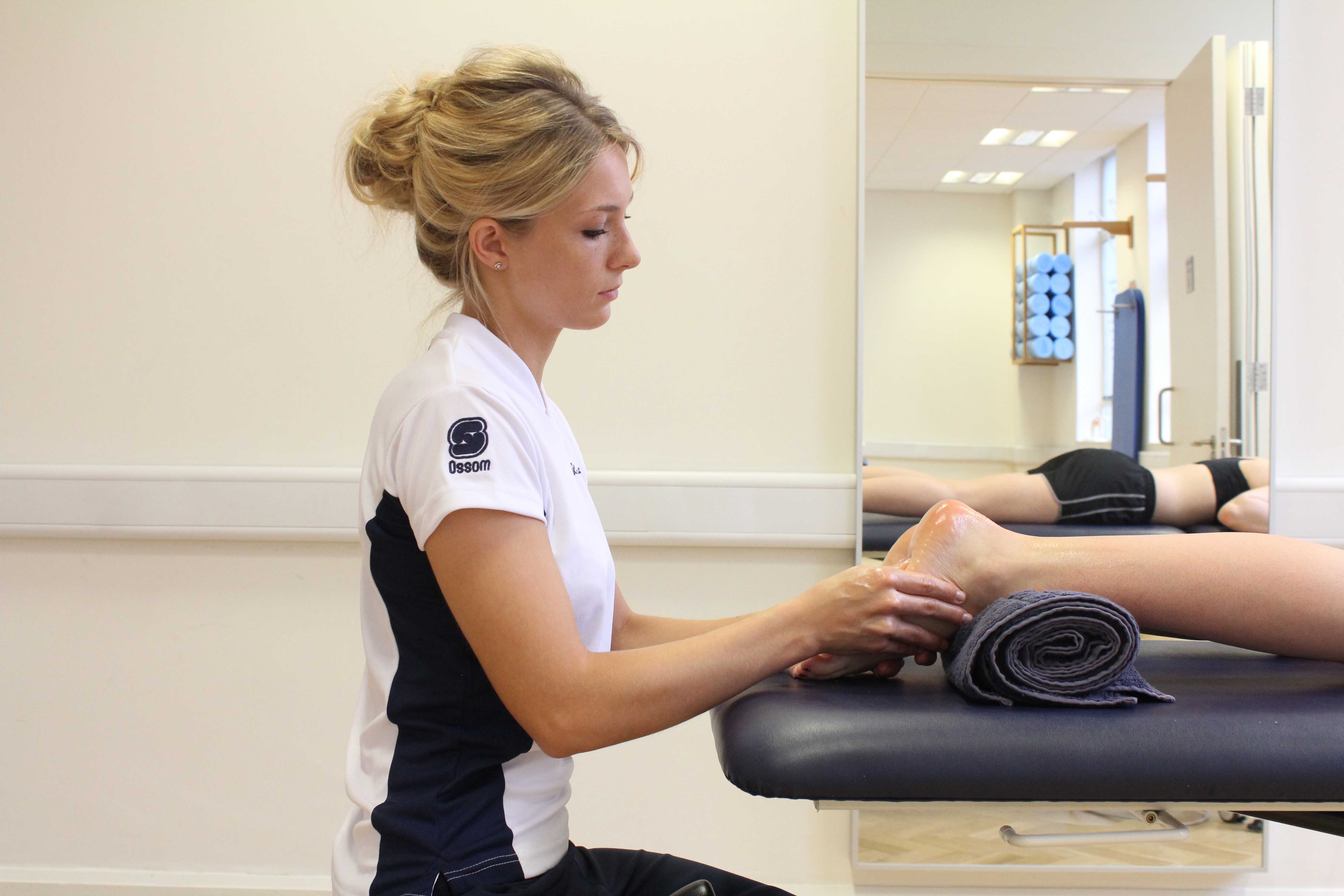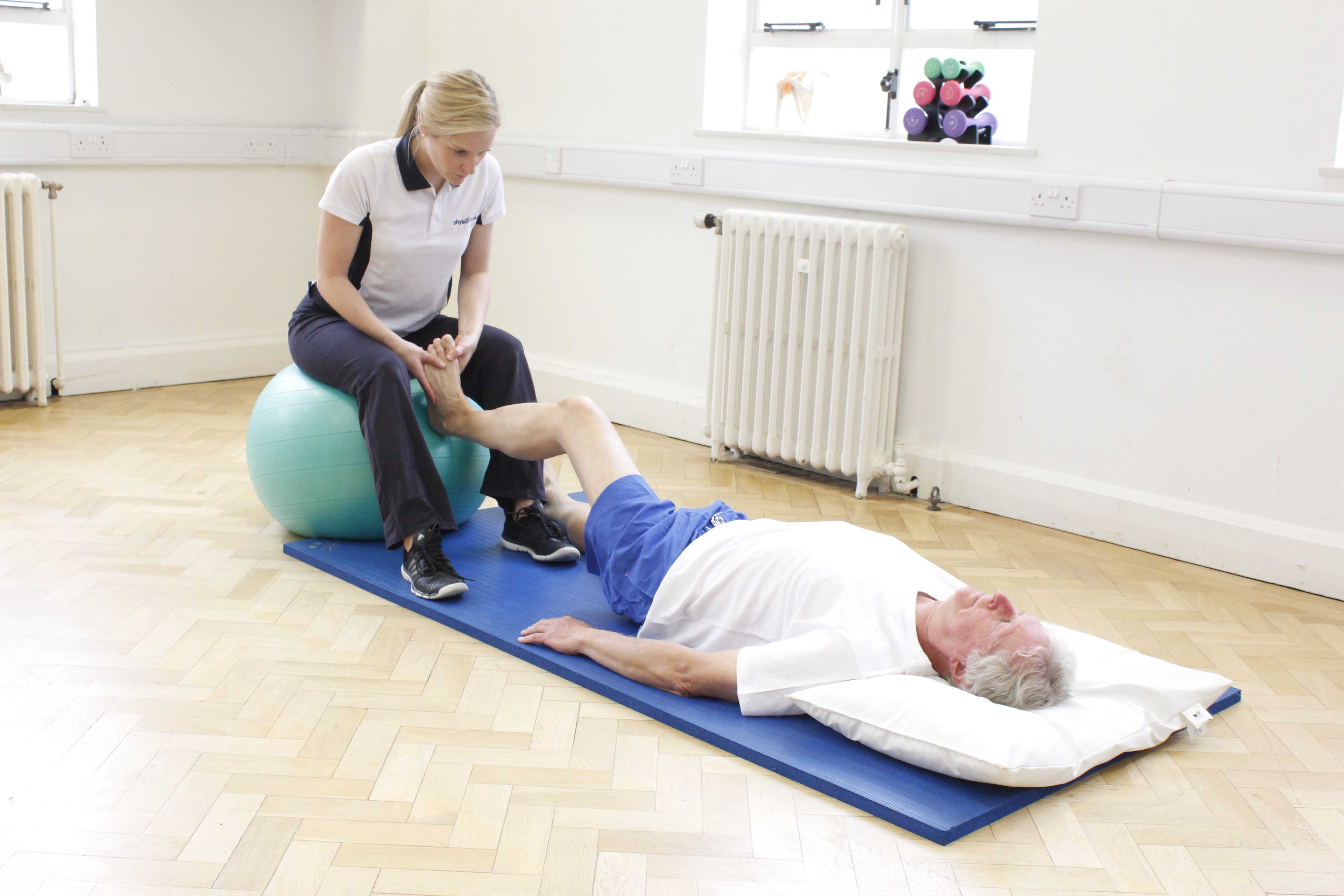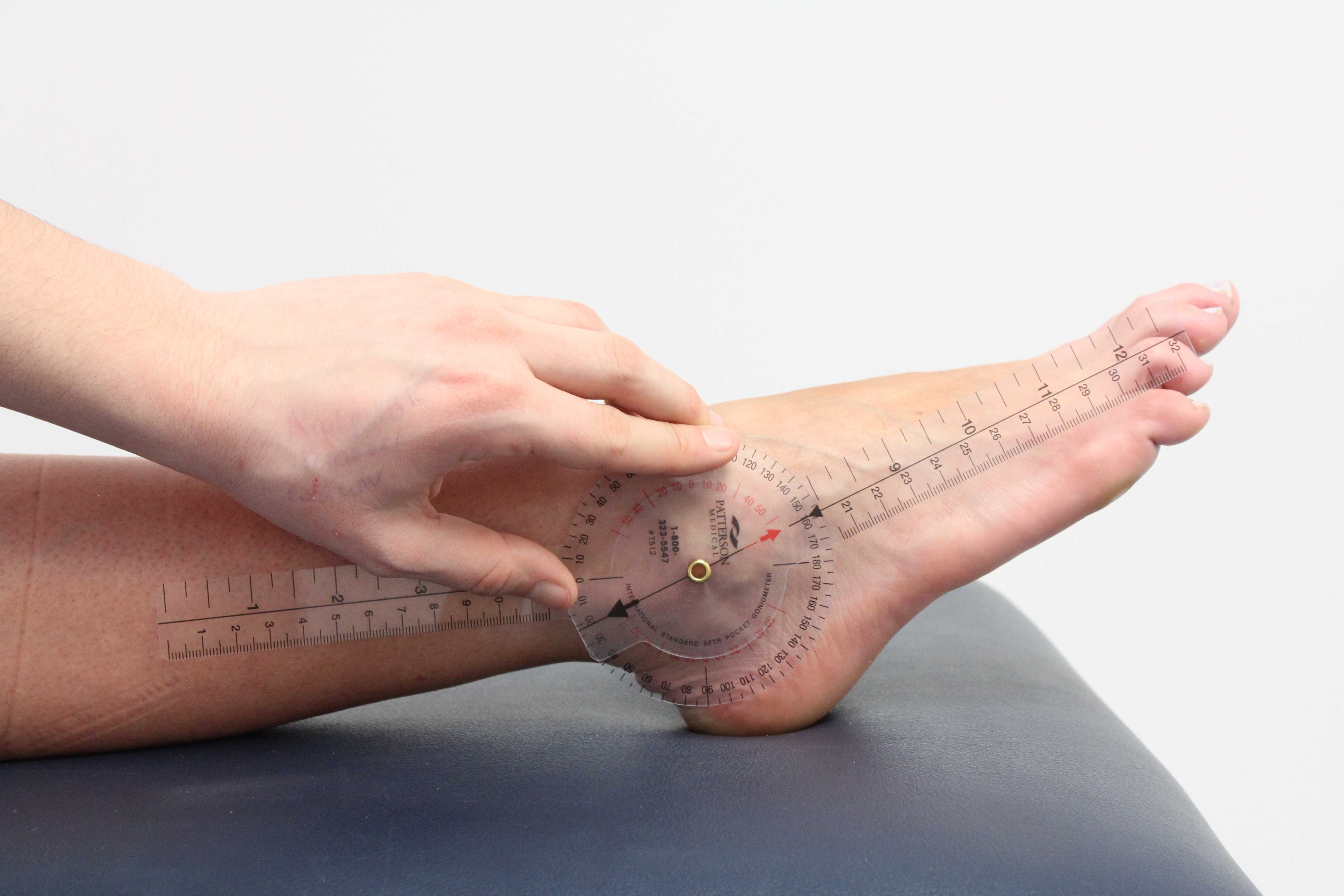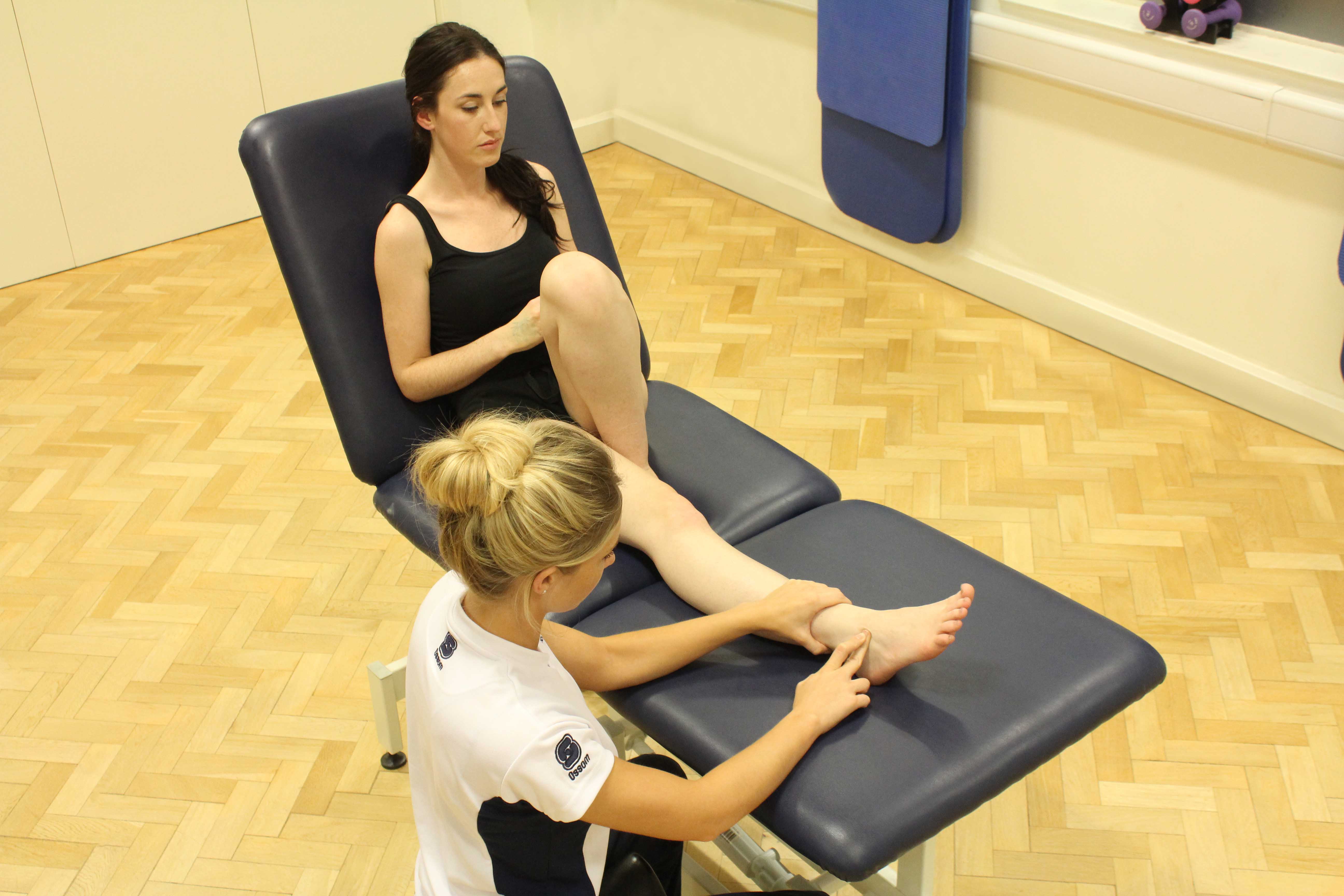Morton’s Neuroma Surgery
Morton’s neuroma is an enlargement of the nerve in the foot, between the third and fourth toes. As the nerve sits in a confined channel between the upper ligament and the toes themselves, the nerve can become compressed during walking. This nerve compression can result in pain.
People with flatfeet or those who regularly wear tight fitting shoes may be more likely to develop a Morton’s neuroma. High heels may also present as an aggravating factor due to increasing load on the forefoot.
Symptoms of Morton’s neuroma include:
- Pain in the space between third and fourth toes, radiating into the toes, this can be coupled with numbness or pins and needles
- Pain aggravated during walking (particularly in shoes), that eases with rest.
- The sensation of having a “stone in your shoe” during walking
 Above: Passive stretch of the connective tissues in the foot
Above: Passive stretch of the connective tissues in the footPhysiotherapy prior to Morton’s neuroma surgery
Surgery forMorton’s neuroma is only carried out in the most severe cases. A non-surgical approach will be taken before surgery in an attempt to relieve symptoms.
Prior to turning to surgery, Physio.co.uk will work to relieve the symptoms with interventions such as:
- Ice therapy (Cryotherapy) to alleviate tenderness
- Education regarding footwear – avoiding tight fitting shoes
- Modifying footwear as appropriate - for example using additional padding to relieve pressure and spread load over the metatarsals, or to simulate an arch
- Strengthening exercises for intrinsic foot muscles
Common types of Morton’s neuroma surgery are:
- Providing the nerve with more space (nerve decompression),
- Removing the nerve altogether (neurotomy)
Physiotherapy is important following surgery, regardless of the surgical approach taken.
 Above: Passive stretch of the foot and ankle
Above: Passive stretch of the foot and ankleSymptoms after surgery
Following surgery it is likely you will experience residual pain and swelling round the scar site.
Physiotherapy following surgery for a Morton’s neuroma
The Physiotherapy programme prescribed will depend on the operation performed. Our physiotherapists will use clinical knowledge and judgement in creating a programme tailored to you and your surgery.
Our Physiotherapists can work soon after surgery to enhance healing. You will be taught strategies to enable you enhance scar healing at home. These will include ice therapy (Cryotherapy), and self massage techniques. Our physiotherapists also encourage keeping your foot elevated as much as possible following surgery, and carrying out gentle range of movement exercises to aid circulation.
Depending on the surgery performed, recovery can take anytime between 5 days and 3 weeks.
 Above: Assessment of the foot and ankle using a goniometer
Above: Assessment of the foot and ankle using a goniometerIf you have dorsal surgery (Incision top of foot) – You will be allowed to mobilise independently soon after surgery, our physiotherapists will be able to advise whether you require any walking aids, and work to increase your confidence on your feet. Ice will be used to reduce pain and swelling. Exercises will be given to increase the range of movement in your toes and ankle, and strengthening exercises will work to ensure you feel strong and safe on your feet.
If you have plantar surgery (Incision bottom of foot), you must keep all weight off your foot, and mobilise with crutches for at least 3 weeks following the operation. During this time off your feet, our physiotherapists will be able to provide seated exercises to keep up both the strength, and range of movement in your legs. When the time comes when you are able to weight-bear, our physiotherapists will be on hand to guide you through your first steps, and work with you in increasing confidence not only on the flat but also slopes, and even the stairs. Our physiotherapists will work at your pace, and address your personal goals.
 Above: Friction massage of the ligaments in the foot
Above: Friction massage of the ligaments in the footSummary
Surgery is only carried out in severe cases of Morton’s Neuroma. Surgery works to relieve the nerve from compression. Here at Physio.co.uk we can help both prior to, and should surgery decided to be undertaken, following surgery. Following surgery a tailored physiotherapy programme will be put in place with the main aims being to reduce pain, build strength and enhance confidence on your feet. We will work together to negotiate and produce an extensive and detailed week-by-week rehabilitation program focused on achieving your personal goals.
Call Physio.co.uk now on 0330 088 7800 for more information or to book an appointment please contact us.

 0330 088 7800
0330 088 7800

































